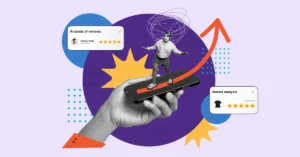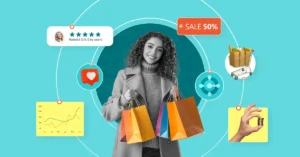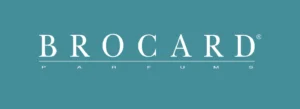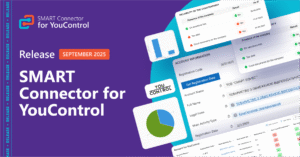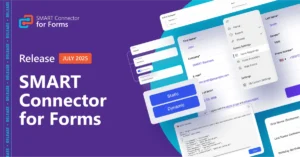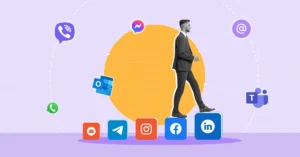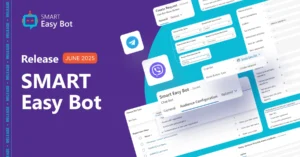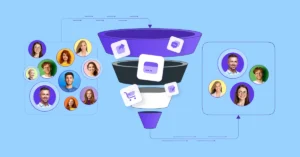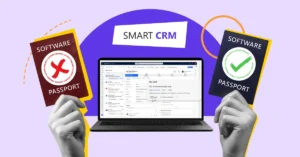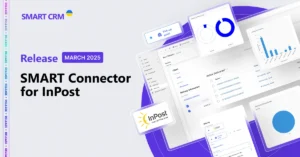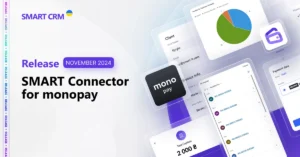A Seamless Sales Funnel: How CRM Keeps Every Lead in Focus

In business, sales often define a company’s success — every inquiry holds the potential to become a deal, and every interaction can lay the groundwork for future collaboration. That’s why sales teams often resemble emergency response units: juggling a flood of contacts, limited time, and constant multitasking. Without a clear system to track every interaction, the sales funnel can quickly turn into a sieve, leaking valuable opportunities.
What’s more, according to Gartner, 84% of business leaders say that the handoff between marketing and sales is one of the most complex and critical challenges. Sounds familiar? The transition from MQL (Marketing Qualified Lead) to SQL (Sales Qualified Lead) is a delicate process that requires nurturing the lead at every stage of the funnel — until they show a clear intent to buy. This is where most gaps occur, and they can cost companies dearly.
In simple terms, an effective sales funnel is a tool that helps the team act in sync. It’s a way to see the big picture, identify where the flow stalls, and uncover what’s holding back conversion.
What Is a Sales Funnel in Business Terms?
A sales funnel — also known as a “sales pipeline” — is a sequence of stages a potential customer goes through, from the first interaction with a company to closing a deal (making a purchase, signing a contract, ordering a service, or subscribing to a product, etc.). Think of it as a narrowing path, like a funnel: many interested prospects enter at the top, and only those truly ready to buy make it through to the bottom.
For businesses, it’s a practical tool that helps to:
- Organize the customer acquisition process.
- Identify weak points (analyze where most leads drop off).
- Optimize resources (allocate the team’s efforts so that every sales stage operates efficiently).
- Increase conversion (better understand customer needs and tailor communication strategies).
In other words, a sales funnel gives you a clear view of where prospects are “getting stuck,” where customers need more attention, and how to increase the number of successful deals. It’s the foundation of a strategy aimed at minimizing losses and maximizing profit.
Business Benefits
An effective sales funnel offers a number of advantages for businesses, including:
- Full process visibility — you can track every step of the customer journey, understand where a lead currently is, and what actions are needed to keep the momentum going.
- Bottleneck detection — the funnel shows where potential clients are most often lost. This allows for targeted, data-driven decisions instead of guesswork.
- Prioritization focus — instead of spreading efforts too thin, the team can concentrate on leads that are closest to conversion. This saves time and resources while boosting performance.
- Improved customer experience — by knowing where a customer is in the funnel, you can tailor communication, offer relevant solutions, and address the questions that matter most at each stage.
- Outcome forecasting — by analyzing the funnel, it becomes easier to predict how many deals are likely to close soon. This improves planning and minimizes surprises.
- Higher conversion rates — a structured approach helps increase the percentage of leads moving from one stage to the next, resulting in more closed deals overall.
- Transparency and accountability — the sales funnel makes the process clear both for managers and the team. Everyone understands their role and is accountable for results at their stage.
- Scalability — when the process is well established, it becomes easier to grow sales volumes since every stage is clearly defined and under control.
How Does a Sales Funnel Work?
Imagine the real path of a buyer: first, they search for something, then come across your product or service. Next, they read reviews, compare you to competitors, hesitate, consult others — and finally make a decision.
A typical sales funnel is divided into several stages:
- Top of the funnel — the broadest level where people are just becoming aware of your brand. This stage is driven by advertising, social media, and SEO tools.
- Middle of the funnel — the potential customer is already interested: they’re reading your blog, attending a webinar, or downloading your price list. Here, it’s important to explain why your offering is worth their attention.
- Bottom of the funnel — the customer is almost ready to buy but needs a final push: a product demo, success story, or a personalized consultation.
When the funnel is thoughtfully designed — with respect for the customer and without pressure — it doesn’t feel like a sales push. Instead, it feels like guidance. The customer sees that you’re not dragging them forward but leading them along a path they’re genuinely interested in.
How to Work with a Sales Funnel
To truly serve your business, a sales funnel must be a living tool — meaning it should be fully integrated into your day-to-day operations. Here are several key principles to make your funnel systematic and results-driven:
- Start with your current reality — assess what your funnel looks like right now. How many leads are at each stage? Where are most of them dropping off? Without an honest diagnosis, it’s hard to make changes. Don’t be afraid to identify weak spots — they are your growth points.
- Clearly define the stages — every sales funnel has its own levels, from the first contact to closing the deal. Structure your stages based on your business process, for example:
- Lead generation (creating interest via ads or content)
- First interaction (a call, email, or meeting)
- Solution presentation (demo of your product or service)
- Negotiation (discussing deal terms)
- Closing the deal (purchase, contract signing, service activation)
There’s no one-size-fits-all funnel. Some may have 4 stages, others 8. The key is aligning each stage with the logic of your customer journey — from first click or call to the final signature.
- Assign clear actions and responsibilities at every stage — when your funnel becomes a team tool, everyone knows what to do with leads at their specific stage. For example: “A lead who responded to a commercial offer” = a task for the manager within 24 hours.
- Log every interaction — from the first “hello” to the final “thank you for your purchase,” since each potential client may be at a different stage of the funnel. A CRM system is your best assistant here, ensuring that all calls, emails, notes, and negotiation history are kept in one place. This minimizes the risk of losing important information during handovers or team changes.
- Measure, analyze, adjust — because what isn’t measured can’t be improved. If you’re losing many leads at a specific stage, it’s a signal to optimize the process. For example, maybe your presentation isn’t convincing enough, or the negotiation stage needs more flexibility. In this case, data becomes your best advisor.
- Automate where it truly makes life easier — reminders, email campaigns, auto-tasks — these save time and reduce human error. But don’t let automation become bureaucracy. An automated sales funnel should enhance, not hinder, live communication.
- Collecting lead data
- Sending reminders and emails
- Generating analytics on each stage’s performance, and more
- Use a personalized approach — customers value tailored communication. Your sales funnel should reflect their interests, and a CRM system for business helps you adapt your offers to their specific needs.
The Most Common Types of Sales Funnels and Key Differences Between B2C and B2B Funnels
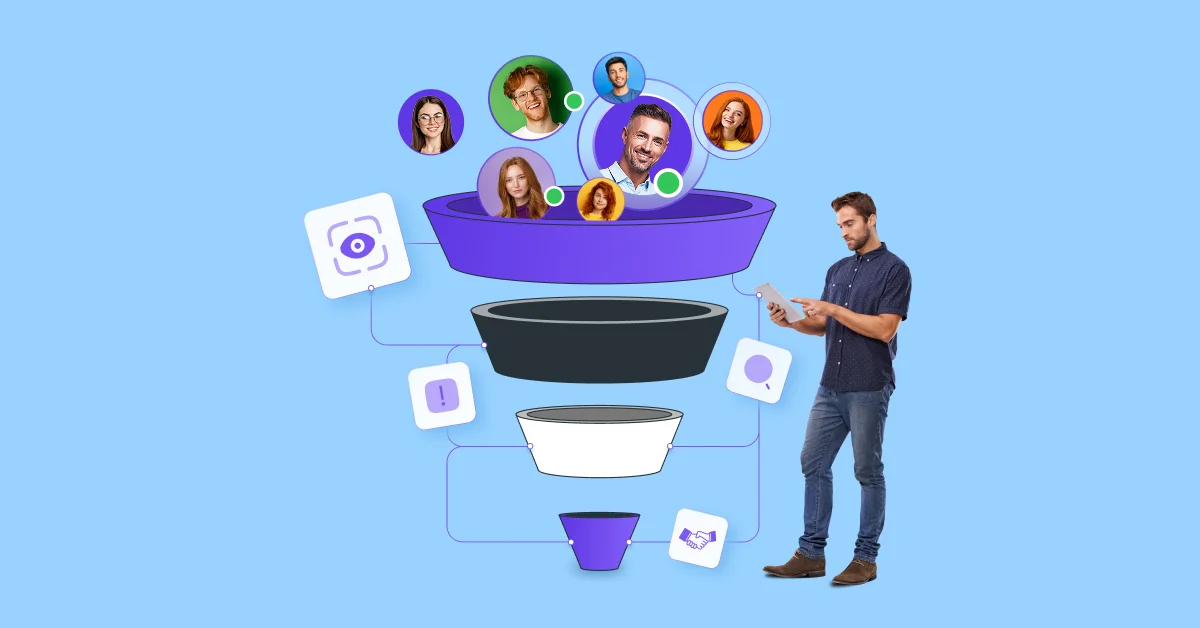
For B2C, the classic marketing funnel AIDA is typical:
Attention → Interest → Desire → Action.
Let’s break down these stages in detail:
- Attention — The company first grabs the person’s attention toward the product or brand. For example, a bright banner, a provocative headline, or social media ads.
- Interest — At this stage, you need to engage interest: show why it’s relevant, useful, or simply worth noticing. This involves meaningful content that answers questions or highlights the product’s value.
- Desire — Here, the customer starts wanting the product or service. It’s important for them to see how it solves their problem or improves their life. Reviews, use cases, and visualizing benefits work well here.
- Action — The final step. The customer takes the desired action: buys, registers, submits a request, etc. Marketing’s job is to simplify this step and eliminate any last doubts.
In B2C, purchase decisions are usually faster, and contact often happens directly with the end consumer. It’s more about impulse, convenience, and speed. The funnel is short, with minimal steps. In such conditions, SMART CRM helps ensure no contact is lost, quickly responds to customer actions, and automates repeat sales — exactly what’s needed to work effectively with B2C audiences.
B2B is much more complex. The decision is made not by one person but by a team, each with their own perspective, motivation, and concerns. So, the B2B funnel typically looks like this:
Need Identification → Solution Research → Option Evaluation → Agreement → Deal → Post-sale Support
Here, both emotion and logic, arguments and trust, matter. Sales cycles are longer, more complex, and every stage is critical. SMART CRM helps keep a complete history of interactions, structure all deal stages, automate follow-ups, and ensure continuous communication between departments. This creates a sense of control and transparency in B2B sales.
As a B2B company itself, SMART business also works with long sales cycles and uses SMART CRM to manage its own marketing and sales processes to stay effective at every customer touchpoint.
How to Determine When a Customer Is Ready to Move Forward?
Obviously, not every contact immediately becomes a lead. And not every lead is ready to buy. For the funnel to work systematically, it’s crucial to clearly understand the signs that show when a potential customer moves from one stage to the next. Here are some examples of criteria companies commonly use:
- From Attention to Interest: the user clicked a link, subscribed to a newsletter, or left their email. This means the content worked, and it’s time to prepare personalized communication.
- From Interest to Desire: the person downloaded a price list, registered for a demo, asked a question in chat, or spent time on a case studies page. In this case, it’s appropriate to hand the lead over to a sales manager.
- From Desire to Action: the client requested a consultation, agreed to a call, responded to an offer, or filled out an application. This is the moment when it’s crucial to maintain momentum and close the deal.
- From Action to Post-sale Support: payment has been made, the client became an active user or partner. This is where a new story begins — about support, upselling, and loyalty.
SMART CRM enables you to track these signals and automate transition logic. This means the system helps you see which stage the client is at and suggests what to do next: send an email, create a task, offer content, or hand the contact over to another department, etc. Thanks to a clear view of transitions between stages, the sales team doesn’t lose potential deals and works not by guesswork but strategically, understanding exactly where each lead stands and what needs to be done to get them to the finish line.
Automated Sales Funnel with the SMART CRM Platform
In sales, victory doesn’t always go to the loudest, but to the most systematic. However, it’s important that this system doesn’t stifle initiative — instead, it should support it. That’s exactly how SMART CRM works: a full-fledged sales ecosystem where there is room for both rules and creativity. An automated sales funnel isn’t a rigid robot forcing everyone into the same mold. Rather, it’s a detailed map clearly marking key points — but how you get there is up to you. The system sets the route but doesn’t limit your choice of tools: call, write, schedule meetings, launch marketing campaigns — all these capabilities are gathered in one working environment. So, SMART CRM disciplines without restricting.
But how much of the sales process should be regulated, and how much should remain creative?
Regulation is necessary for:
- A unified standard of customer service quality.
- Analytics and forecasting (without defined stages and statuses in CRM, measuring effectiveness is impossible).
- Training new employees: a clear structure significantly shortens the adaptation period.
- Ensuring scalability: it’s good if the process works for one manager, but when the team grows, a single system is needed.
- Compliance with legal and commercial requirements: for example, in B2B, it’s important to have an approved offer, contract templates, and clear approval procedures.
In other words: funnel stages, criteria for moving between them, a set of mandatory actions and documents, and communication rules must be clearly defined and followed.
So, what should remain creative?
- Building a personal connection with the client: adapting to their style, mood, and expectations.
- Negotiations that require flexibility, improvisation, and unconventional solutions.
- Visualizing product value to most effectively convey benefits tailored to a specific situation.
- Handling objections, because standard templates often don’t work — a personalized approach is needed.
It’s worth noting: the more complex the product, the greater the role of creativity. But mass sales require stricter regulation to maintain consistent quality.
Advantages of an Automated Sales Funnel with SMART CRM
- Clear structure and freedom of action — SMART CRM helps standardize the sales process with clearly defined stages. Yet within each stage, the manager has freedom to decide which specific actions to take to achieve results. This allows for maintaining a unified system without losing the individual approach to the client.
- Timely follow-ups without the risk of missing anything — automated reminders, triggers, and tasks in the CRM help ensure no potential client is overlooked, keeping order and control at every stage of the sales process.
- The whole team works in a single information space — reports, comments, and interaction history are available in real time. With an automated sales funnel, there’s no need to ask or clarify statuses with colleagues — everything is always up to date and visible.
- Business sees the full picture — data in SMART CRM is presented in an easy-to-understand format for fast and informed decision-making.
- Instructions exactly where they’re needed — newcomers don’t get lost thanks to clear scripts, while experienced sellers stay engaged because there’s room for improvisation.
What About the Drawbacks?
It’s important to be honest here: automation almost always means changing habits. If previously a manager kept everything in their head or in spreadsheets, that won’t work with a CRM. It’s a system that requires a culture of reporting and regular interaction. But once this culture takes root and becomes routine, the company’s efficiency grows exponentially.
SMART CRM is the entire sales logic in one solution. The platform combines marketing, service, analytics, inquiry and order processing for both B2B and B2C directions. Thanks to the SMART Sales solution, a company can keep the entire deal cycle under control — from the first contact to closing. The SMART Order Management solution automates order processing. SMART Customer Care helps quickly resolve client inquiries without losing requests. And SMART Marketing enables managing customer segments, launching omnichannel campaigns in real time, and analyzing their effectiveness. All actions are transparent, coordinated, and measurable.
Moreover, the system supports extension through additional connectors and integrations, allowing you to unify all key communication channels in one environment — such as messengers, social networks, and popular services like Nova Poshta, Rozetka, and others. This capability ensures a seamless and personalized experience for your customers.
A practical example of implementing an automated sales funnel approach comes from AM Integrator Group. The company approached SMART business with a request to strengthen their sales department with a modern CRM solution that supports flexible integration with Microsoft 365.
As a result, SMART Sales from the SMART CRM product stack was implemented. Thanks to this, the AM Integrator Group team gained a unified workspace for smoothly guiding clients through the key sales funnel stages. The solution integrates with Outlook and Microsoft Teams, so managers receive reminders about planned tasks, meetings, or activities right in their familiar work tools, without switching between multiple applications. This significantly simplifies daily work and improves discipline in task completion.
The procedure for creating a new client card was also automated, and important data is displayed in Power BI analytical dashboards, which greatly sped up business process planning and control. The system allowed configuring funnel stages according to the company’s internal processes and adding important fields for evaluating each deal — for example, the probability percentage of closing or the expected margin.
Overall, this enabled better work planning, simplified onboarding for newcomers, and provided a complete picture of specialist involvement in each deal.
How to Measure the Sales Funnel — An Example
To not just guess but actually know where you are “losing” customers and how to fix it, you need to regularly calculate conversions between funnel stages. Conversion is the percentage of leads moving from one funnel stage to the next. The formula is very simple:
Conversion (%) = (Number of leads that moved to the next stage / Number of leads at the previous stage) × 100
Example:
You have 500 leads who submitted a request on your website. Managers contacted 300 of them, and 120 agreed to a product presentation.
- Conversion from request to call = (300 / 500) × 100 = 60%
- Conversion from call to presentation = (120 / 300) × 100 = 40%
These simple numbers already show where potential customers are lost. If you lose 40% at the first step, it signals room for improvement. And if only 10% proceed from presentations to commercial offers, it’s necessary to analyze the presentation, the manager’s approach, or the relevance of the offer to the target audience more deeply.
To get truly useful insights, consider:
- The full customer journey, not just the final deal stage.
- Lead sources — because conversion rates from a webinar and a cold call can differ drastically.
- The role of the manager — who handled the deal and what tools they used.
- Product complexity — SaaS solutions are one thing, developing a large project from scratch with numerous integrations is another.
Calculating conversions at each stage (lead → qualified lead → presentation → commercial offer → deal) allows you to see exactly where the process “drops off” and, most importantly, why.
How to Improve Sales Funnel Conversion in CRM?
When you identify weak spots in the funnel, you can make targeted process improvements: add triggers, reminders, adjust scripts, and enhance interaction across different channels.
To prevent customers from “getting stuck” in the middle of the funnel or getting lost between communication channels, it’s important to create a comfortable and consistent interaction experience for them. SMART CRM helps achieve this through three key approaches:
- Omnichannel Presence: Be where the customer is — today’s buyer doesn’t have the patience to wait for a callback. They might write in a chat, respond to a lead form, or leave a request via messenger. Omnichannel in SMART CRM means that all these inquiries automatically feed into the funnel on a single customer card, with no risk of getting lost. The manager sees everything in one place and can respond faster. This directly impacts conversion from the first contact: the quicker the response, the higher the chance of engaging the customer.
- Use of AI: Smart chat assistants at the service of sales — SMART CRM offers scalable customer interaction powered by intelligent solutions like SMART Chat and SMART Easy Bot. These extensions help automate communication, making it personalized and convenient. SMART Chat unifies popular messengers in one window, preserves chat history and analytics, while SMART Easy Bot allows creating smart chatbots for Viber and Telegram, implementing self-service scenarios, mailings, and collecting verified contacts.
These solutions are called “smart” because they can automatically respond to customer requests without operator involvement, recognize intent, suggest next steps, and provide relevant information in real time. Together, they reduce response time, boost customer trust, and give managers tools for proactive work. - Building a Customer Journey Map: Understanding the customer’s path = Impact on results — SMART CRM collects information about customer interactions: when and how they contacted you, what they viewed, and where they got stuck. This helps identify typical behavior patterns and adapt to expectations. For example, if most leads “drop off” after receiving a commercial offer, it might be time to revise the email template or add a reminder call.
Conclusion:
With SMART CRM, a company gains not only clear metrics but also real tools to influence them. The system highlights problem areas and provides solutions to address them — from automation to in-depth customer journey analytics.
If you’re curious how SMART CRM can help your sales team close more deals, request a consultation to learn how to tailor the system to your sales funnel and achieve measurable results!
